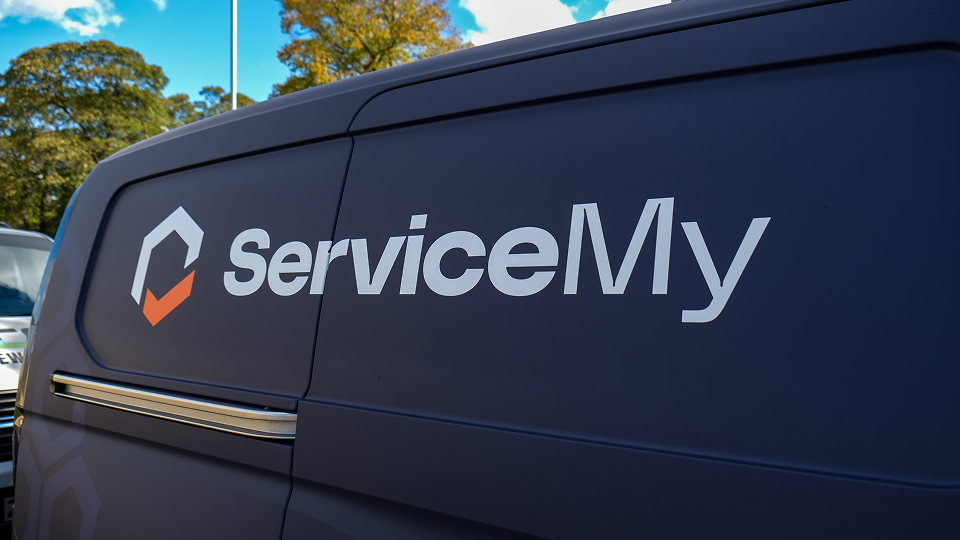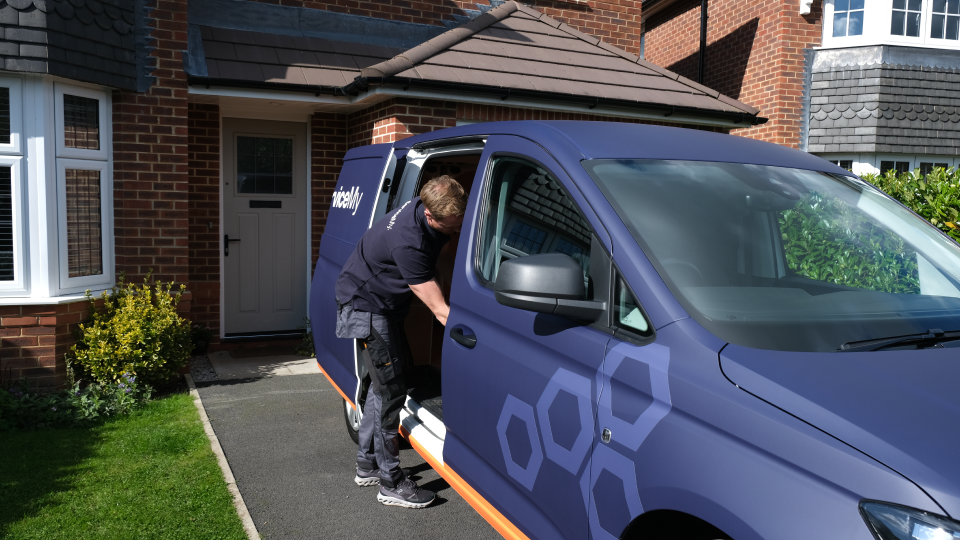Choosing the right size air source heat pump (ASHP) is crucial for comfort, efficiency, and long-term savings, so determining the perfect fit for your property is essential.
A system that’s too small will struggle to keep up and run consistently, using more energy than it should. One that’s too big could short-cycle, wear out faster, and cost more to install and maintain. In both cases you lose out on comfort, efficiency, and long-term value.

The right-sized heat pump, on the other hand, will keep your home warm and your energy bills down, while cutting carbon usage and protecting your investment.
We’ll help you find the perfect air source heat pump size for your home, showing how factors like square footage, insulation and climate affect the right system for optimal efficiency.
Key factors that affect sizing
Getting the correct heat pump size depends on more than just square footage. From insulation to climate, here are the main elements professionals consider when recommending a system:
- Floor area
The start point for any sizing calculation. As a general rule, you need around 1kW of heat output per 20m² of floor space. So for example:
- A small flat (~60m²) may only need a 3kW system
- A typical 3-bedroom house (~100m²) may need 4–5kW
- Larger homes can require systems ranging from 8–16kW
- Insulation quality
A well-insulated home will hold heat for longer, so it doesn’t need as much energy to stay warm. On the flip side, poor insulation means greater heat loss and a harder-working heat pump.
Upgrading insulation before installing a heat pump can often reduce the size (and cost) of the system you’ll need.
- Local climate
Homes in colder parts of the UK – like the north of Scotland – will need more output than those in milder southern regions. Local winter temperatures will affect how hard your system has to work, especially when heating demand is at its highest.
- Home layout and glazing
Open-plan spaces, high ceilings, and large areas of single-glazed windows all increase the heating load. Older properties with draughty rooms or lots of external walls may also need a slightly larger system than a compact, modern build.
- Your existing heating system
If your home already has underfloor heating or modern radiators designed for low-temperature systems, you may not need as much output. But if you’re pairing the heat pump with older, smaller radiators, you’ll likely need a larger unit – or a system designed to work harder at higher flow temperatures.
Typical size estimates for UK homes
While every property is different, typical UK home sizes offer a good baseline for heat pump sizing. Below is a general guide to what size unit might suit your home, based on floor area and number of bedrooms:
| Bedrooms | approx. size (m²) | estimated heat pump size |
|---|---|---|
| 1 bed | 60–70 m² | 3–4 kW |
| 2–3 bed | 90–110 m² | 4–6 kW |
| 4 bed | 130–200 m² | 7–10 kW |
| 5+ bed | 220 m²+ | 12–16 kW |
These figures assume average insulation and a typical layout. If your home is very well insulated, you may be able to downsize slightly. If it’s older, draughty, or has single glazing, a more powerful system may be required.
This table offers a starting point – but is not a substitute for a full heat-loss calculation. Think of it as a ballpark guide to understand what your home might need before you speak to a professional.
The risks of choosing the wrong size
Getting the size of your air source heat pump wrong can lead to long-term problems both for comfort and your wallet. Here’s what can happen if your system is too small or too large for your home.
- Undersized systems
If your heat pump isn’t powerful enough for your home’s heating needs, you’ll likely face:
- Insufficient heating during colder months
- Overworking your system, leading to higher energy use
- Increased wear and tear, reducing lifespan
- Higher running costs, especially during winter
- Need for backup heating, such as electric heaters, undermines efficiency
- Oversized systems
It might seem safer to go bigger, but an oversized heat pump can be just as problematic:
- Short cycling – the system turning on and off too frequently, wearing out components
- Increased maintenance issues
- Higher upfront costs for a unit that may never be fully utilised
- Poor temperature control, especially in milder weather
- Humidity issues – because the system doesn’t run long enough to remove moisture effectively
Choosing the wrong size might not cause issues right away, but over time can lead to discomfort, unexpected repairs, and increased costs. That’s why proper sizing is essential.
Why a professional assessment is essential
Online guides and sizing tables are helpful for rough estimates – but when it comes to choosing the right air source heat pump for your home, there’s no substitute for a full professional assessment.
Qualified engineers use a process called heat loss calculation, which looks at how much heat your home loses through its walls, windows, roof, and floors. They also factor in:
- The number and size of rooms
- Ceiling heights
- Insulation levels
- Window type and orientation
- Local climate data
- Existing heating system setup
This will match your heat pump to your home’s needs, delivering the best balance of efficiency, comfort, and cost.
Professional advice ensures you stay compliant with manufacturer warranties and government funding requirements, especially for systems installed under schemes like the Boiler Upgrade Scheme (BUS).
At ServiceMy, we work with trained specialists who understand the technical and practical demands of heat pump sizing, so you don’t have to guess.
Final tips before you install
Before you choose and install your air source heat pump, here are a few smart steps to improve system performance and potentially reduce the size (and cost) of the unit you’ll need:
- Improve your insulation: Upgrading wall, loft, or floor insulation can significantly lower your heat demand
- Consider window upgrades: double or triple glazing helps reduce heat loss
- Check your radiator setup: Underfloor heating or larger radiators designed for low-flow temperatures work best with heat pumps
- Think ahead: are you planning an extension, loft conversion, or a growing household? Factor in future heating needs now
- Get a full heat-loss calculation: it’s the most accurate way to size your system and qualify for financial incentives
Get the right fit from the start
Choosing the right size air source heat pump is one of the most important steps to getting the comfort, efficiency, and savings from your system.
ServiceMy help homeowners like you get it right from the start. From clear advice to professional assessments and tailored servicing, we’re here to make your transition to low-carbon heating smooth, cost-effective, and built to last.Not sure what size heat pump your home needs? Contact ServiceMy for expert guidance and no-obligation support.
Schedule Your Heat Pump Service Today
Don’t wait until efficiency drops, or your pump encounters issues. Investing in routine maintenance for your air source heat pump is the best way to keep your household energy-efficient, cosy, and cost-effective year-round.
Get in touch with our professional servicing team today to schedule your appointment. With extensive experience in heat pump servicing and home energy solutions, we’re here to help you stay warm, save money, and protect your investment.
Maintain your heat pump, and it will reward you with years of efficient and reliable performance!

